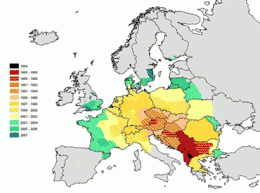Online Encyclopedia of Life reaches 150,000 species

The public and scientists have helped create the first 150,000 species pages in the Encyclopedia of Life (EOL), the global online project to create a page for each of the 1.8 million known species on the planet.
It may be less than one tenth of the way there, but the response of people who have uploaded more than 30,000 images and videos, has been huge say EOL, especially since new tools have been installed to make it easier to add to the site.
It isn't only experts who can contribute to the site. People with an interest in nature but no special scientific training, known as citizen scientists, can add information. For example, images can be uploaded through the EOL's Flickr page.
Each EOL page is verified by experts, and scientists from all over the world can add species information, from physical descriptions to details of habitat, diseases, look-alikes and even DNA barcodes.
The information will shed light on things such as conservation strategies for endangered species, or climate change and the movements of disease-bearing or invasive pests.
David Lees, is an expert on moths and butterflies at the Natural History Museum and at INRA (French National Institute for Agricultural Research), France.
He has created an EOL species page to mark the 25th anniversary of the discovery in Europe of an invasive moth called the horse chestnut leafminer, Cameraria ohridella. It is ravaging the leaves of the white-flowered horse chestnut tree, popular not only for its flowers in spring but for the game of conkers.
'Like the opening of Pandora's box, this moth, first discovered at Lake Ohrid in Macedonia in 1984, has spread like wildfire after a probable accidental release near Vienna in 1989,' says Lees.
Representing a genus not known before in Europe, its origins had been a mystery, but this year entomologists at INRA working on the diversity of its DNA have shown it originated in the Balkans, the source of the horse chestnut tree itself.
The moth does not kill the tree, but can completely brown the leaves by summer, causing councils to replace the trees with other species. In some parts of Europe, it is starting to infest nearby sycamores as well.
'This moth is now more or less throughout Europe and poses a threat to ecosystems in Southeast Asia, North America and elsewhere - wherever the beautiful horse chestnut trees occur,' says Lees.
EOL will help raise awareness of invasive species through detailed species descriptions to help with identification, and regularly updated maps to show their spread. Hopefully, this will allow effective control measures to be carried out more quickly.
More information:
Encyclopedia of Life (EOL) -- www.eol.org/
EOL page in Flickr -- www.flickr.com/groups/encyclopedia_of_life
Provided by Natural History Museum

















